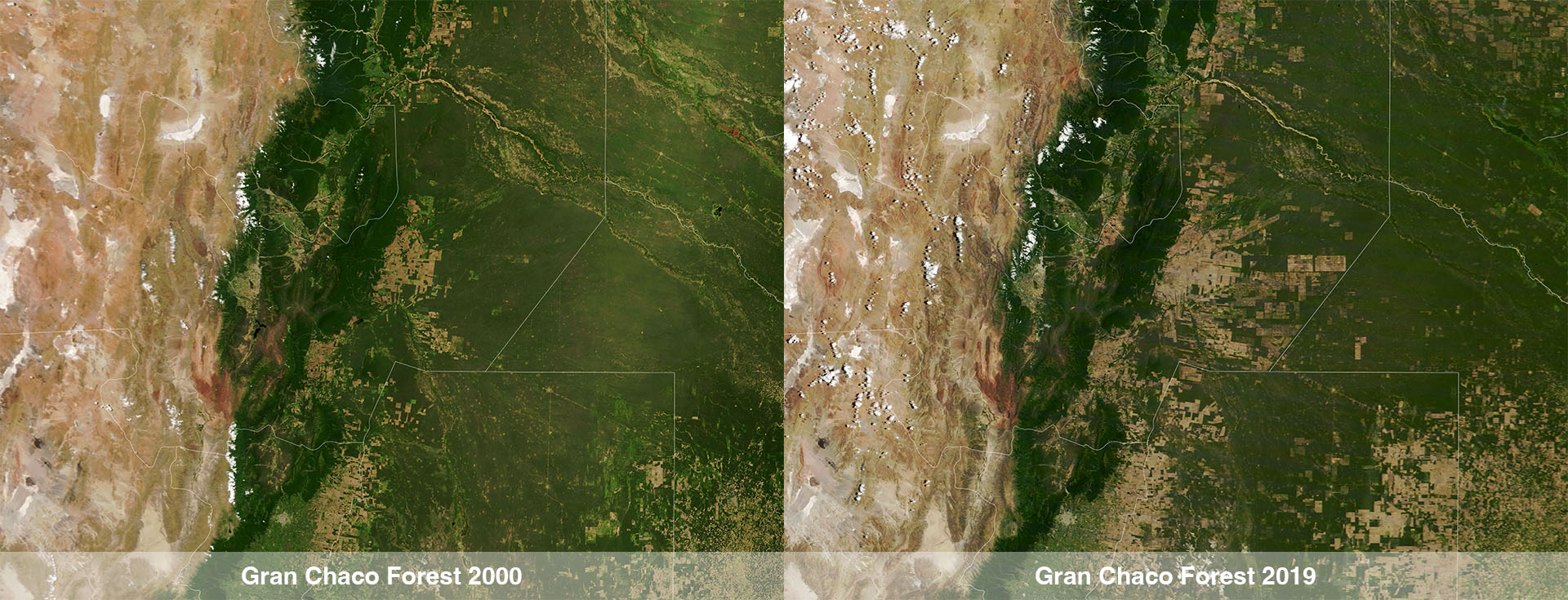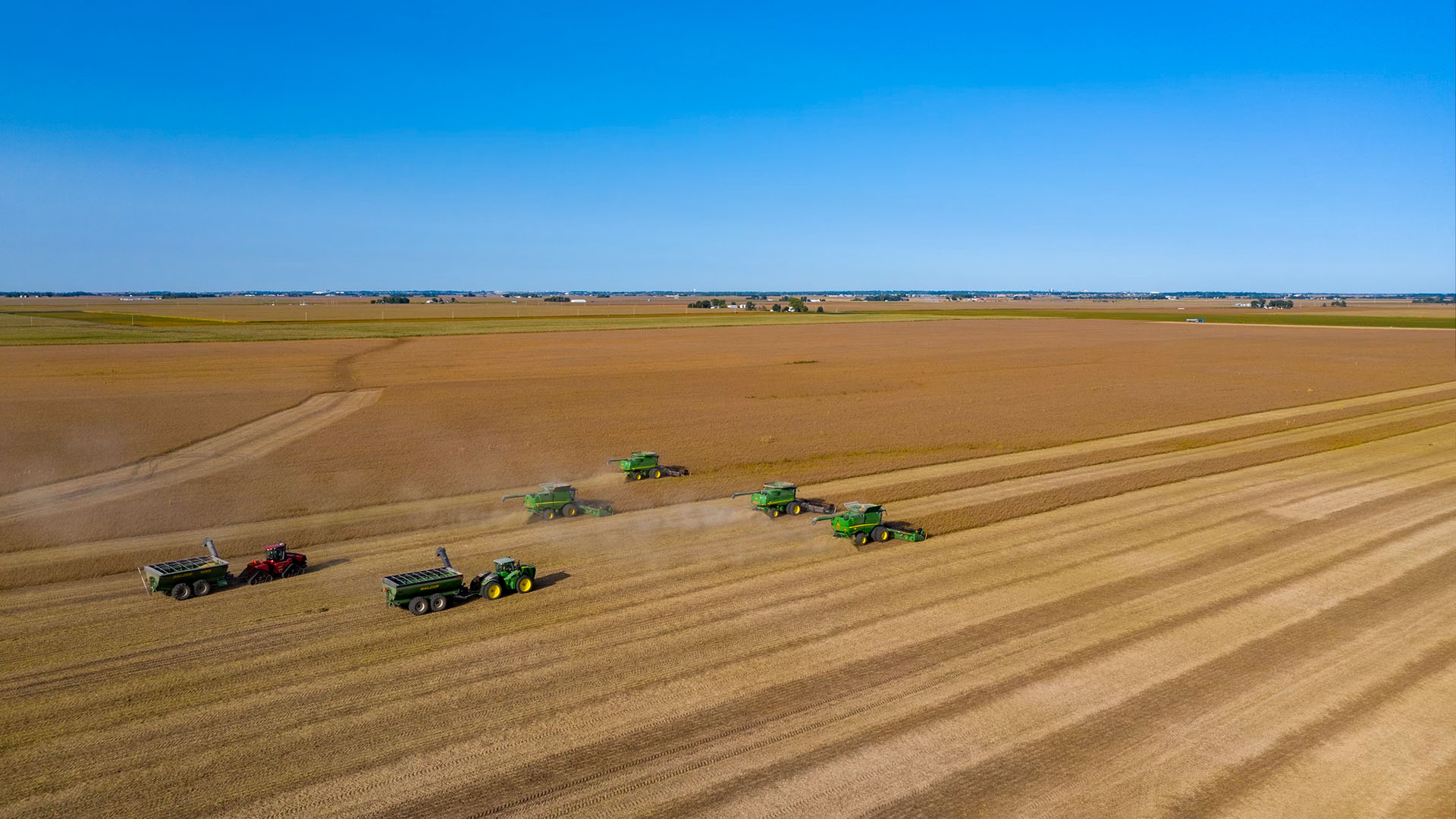Marginal Lands: Avoiding the Mistakes of the Past
The development potential of our marginal lands must consider climate consequences
From former lignite mines to degraded peatlands and monoculture areas in progressive depopulation, almost 30% of the European Union and the United Kingdom’s agricultural area is classified as marginal.
Marginal lands – also known as unproductive, abandoned, or idle lands – are lands with little agricultural or industrial value. They usually suffer from poor climate conditions and soil quality, as well as water scarcity. But converting them to forest, grassland or cropland is not necessarily a sustainable solution either.
Land-use change entails many negative environmental effects including increased CO2 emissions as carbon sinks stored in plants and trees are removed from the environment. The Global Carbon Budget 2023 shows that land-use, land-use change, and forestry accounted for an average of 1.3 gigatons of carbon emissions in the period between 2013-2022. Deforestation was the main driver of these emissions, followed by other land-use transitions, peat drainage, and fire.
Land-use change has adverse effects on above-ground biodiversity and fauna due to the fragmentation of habitats and landscape alteration. Below-ground biodiversity and soil properties are especially affected when changing from grassland or forest to cropland, for example, as the carbon in the soil decreases. Soil health is also damaged due to erosion, desertification, and other factors.
Marginal lands – also known as unproductive, abandoned, or idle lands – are lands with little agricultural or industrial value
There is an additional sustainability aspect to be considered when it comes to land-use change for biobased feedstock. This can be seen in Brazil, where huge areas of rainforest have been cleared to promote cropland and livestock breeding.
“During the last decades in Europe, croplands have been reduced due to abandonment and policy changes. At first sight, this is a positive land-use change, we want to have more rewilded areas and forests, but at the same time, agricultural goods are coming from somewhere else,” argues Karina Winkler, a postdoctoral researcher in the Land Use Change & Climate Research Group at the Karlsruhe Institute of Technology.
Marginal lands have been identified as a potential economic development solution and used for biobased feedstock cultivation with yields in mind. But this process has often gone ahead without due consideration for all the environmental implications of land-use change in marginal lands, such as soil loss through degradation processes like erosion or pollution caused by intensification and abandonment.
Lessons from Intensive Soybean Cultivation in Argentina
Soybean plantations were introduced in Argentina’s northwest La Pampa region in the 1970s. A decade later, the country had become the world’s top soy oil exporter and one of the biggest exporters of soymeal (oilcake and other solid residues from the extraction of soy oil). Nevertheless, yields remained low compared to countries such as the United States and Brazil.
In response, Argentina pushed for agronomic reforms and introduced genetically modified crops like the transgenic Roundup Ready (RR) soybean, which has an increased ability to withstand herbicides. The country also increased national fertilizer production for more intensive cultivation. In the 1990s, zero-till farming technologies were introduced to extend the cultivable land to areas previously considered marginal land.
However, genetically modified soybean production and zero-till techniques carry many negative environmental effects as they depend on herbicides.

The use of pesticides like Endosulfan and herbicides like glyphosate poses a threat not only to human health but also to soil quality as they increase desertification and degradation. Intensive large-scale soybean monoculture also causes extreme soil exhaustion, affecting the overall soil health and requiring increased fertilizer use. In the case of Argentina, data shows that the nitrogen balance has been highly affected by the use of synthetic fertilizers, with most areas under soybean cultivation going through a substantive net loss of nitrogen, which gets into seed exports and leaches into the soil.
The introduction of soy crops and the agricultural expansion in Argentina were done at the expense of clearing large areas of flat and semi-arid forest land in the Dry Chaco ecoregion. It resulted in soil degradation in the cultivated area. Between 1972 and 2011, it is estimated that 2.7 million hectares (ha) of the Dry Chaco Forest were converted to crops or grazing land. This is the largest source of carbon emissions from land-use change in the extra-tropical southern hemisphere.
Argentina is highly dependent on its agriculture sector and moving away from soy production and exporting is a considerable challenge. As of 2022, Argentina was the 4th largest producer and exporter of soybeans in the world and the top exporter ($8.63B) of soymeal.
Biomass for Energy Production in Lithuania
Another example of mass land-use change took place in Lithuania, where rural depopulation accelerated following its independence during the collapse of the Soviet Union. This resulted in land abandonment, especially in areas with low agricultural yields and productivity.
Between 2000-15, bioenergy feedstock extraction in the Baltic country almost doubled, with demand mainly coming from the industry and energy sectors. Lithuania clears huge amounts of forest ha destined for biomass for energy production, which translates into enhanced carbon emissions, and many other ecosystem damages amid a wider national strategy to move away from its dependence on natural gas imports from Russia.

Some studies suggest that the removal of plant nutrients through intensive harvesting of forest biomass could be compensated by recycling forest biomass ash to the forest. However, the rest of the benefits of having trees, in terms of habitat, wind breaks and other resistance mechanisms to extreme weather events factors, and the effects on soil, would never be compensated. Burning biomass to produce energy is not an efficient process and it results in CO2 and N2O emissions.
Biomass is often touted as a renewable energy source, yet its sustainability hinges on proper management. Improperly managed biomass, particularly from wood, can release significant carbon emissions – up to four times more than gas and one and a half times more than coal. In a worst-case scenario, biomass production involves undocumented plantations with unsuitable tree species, leading to unmeasurable carbon sequestration. Harvested wood may be burned inefficiently and exported, exacerbating environmental impact.
Conversely, an ideal scenario entails sustainable timber plantations on repurposed land, employing the biomass cascade concept to ensure carbon remains sequestered in primary uses, with only by-products utilized for local energy production. This approach represents a truly sustainable and renewable energy solution.
Biomass cascade concept
Biomass cascade is defined as a resource-efficient and circular use of biomass. It involves using biomass for the higher added value first, for example, bio-products like furniture or construction materials, and only using the resulting powder or pellets for energy production.
“An intensive bioenergy production cannot be sold as renewable; it is a lot of money-making for the industry as well. That is what happened in the Baltic countries. It is an easy and known solution to contribute to new policy goals, but we should focus on other renewable energy sources,” explains Winkler, lead author of a 2023 report published by Nature.
Besides Brazil, Indonesia, Malaysia, Argentina and Lithuania, there is no shortage of global and European examples of how marginal lands have been misused in the past and present, but do we have any positive references?
New Farming Schemes and Land Management Practices
When it comes to forests, solutions include reforestation, afforestation, altered forest management practices (fire and pest management), and altered consumption patterns.
“We need to manage our forests better; we need to plant now the trees that will withstand climate change in the next 50 years. We know temperatures will change, we will have more forest fires, droughts, etc., and most of the forests that we have now are used to a different climate. There are very important management decisions coming up,” states Christian Holzleitner, Head of Unit of Land Economy and Carbon Removals, at the EC Directorate-General for Climate Action (DG CLIMA).
Forests sit on both parts of the equation. They are part of the problem, as deforestation releases large amounts of CO2 that had been absorbed and stored over time, and they are part of the solution, as terrestrial ecosystems absorb nearly 1/3 of the total anthropogenic emissions.
To combat land degradation and promote carbon storage in agriculture, practices like converting cropland to fallow, using catch crops and conservation tillage, and adopting precision, regenerative, and organic farming methods are crucial. However, incentivizing farmers to transition to these approaches is paramount.
Preserving peat-forming wetlands is also essential, as they serve as significant carbon sinks, but transitioning these areas to new regional economies presents challenges, particularly in fertile soil regions reliant on intensive agriculture.
We need to plant now the trees that will withstand climate change in the next 50 years.
Christian Holzleitner
Encouraging mixed land uses like agroforestry and Agri-PV systems, and avoiding intensive forest exploitation can support biodiversity, bioenergy, and food production. Some of these initiatives are gaining traction in Europe at national and local levels. Spain set up the first national registry of carbon footprint, offsetting and CO2 removal, through which private biomass companies officially certify the additional carbon they store, so other companies can buy it, and they can mobilize investments. In France they created the so-called Label bas-carbon, that presents several soil management methodologies.
The EU strategy is looking to scale up these initiatives and make them attractive for farmers and land managers. The revised LULUCF Regulation, presented in April 2023, puts forward two phases. From 2021 to 2025, the EC proposes to compensate land-use emissions by at least an equivalent amount of accounted removals. In a second phase from 2026 to 2030, it sets a target of 310 million tons of CO2 equivalent removed by 2030 through binding net removal national targets for Member States, which would represent a 15% increase in removals compared to today.
“It is a very ambitious, but realistic target. We need to see more measures by member states through public and private money,” emphasizes Holzleitner. “We do not do this only for the public climate interest, but it is really for the sustainability of our whole bioeconomy.”
The EU also encourages the cascading use of biomass in its Forest Strategy for 2030, adopted in July 2021 as part of the EU Green Deal. It aims to improve monitoring and decision-making around forests and provide better advice and financial incentives for forest managers to adopt more sustainable pathways.
“Using wood instead of fossil fuels could be seen as a mitigation option, but care must be paid not to over-harvest because this would negatively affect the forest sink. Or, if you afforest millions of ha, even marginal lands, for biofuel production or even to restore the CO2 sink, then attention must be paid to avoid displacing emissions and moving the problem somewhere else, creating an indirect land-use change because these lands were previously used for food or feed,” concludes Giacomo Grassi, Senior Scientific Researcher at the Joint Research Centre (JRC) of the European Commission (EC).